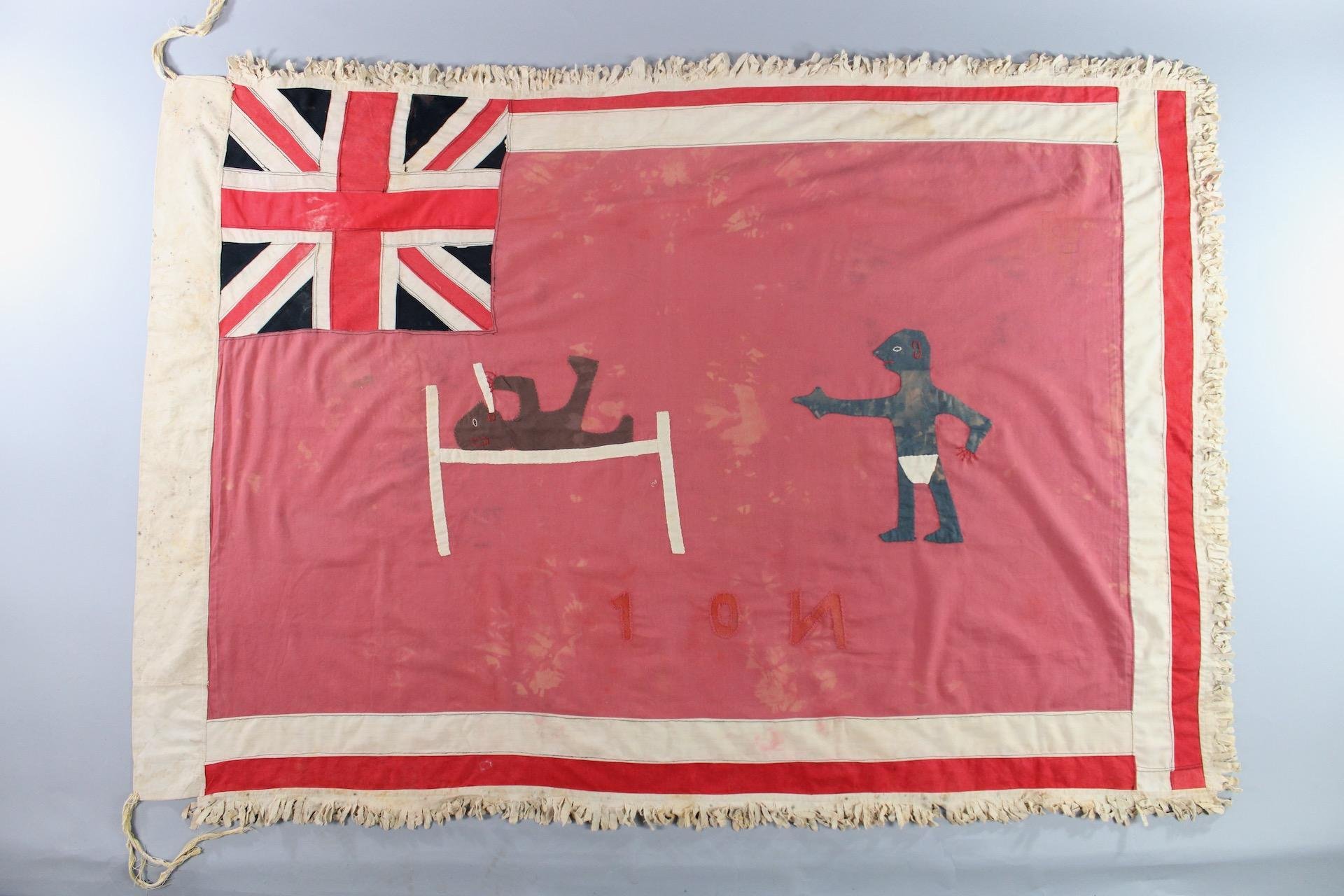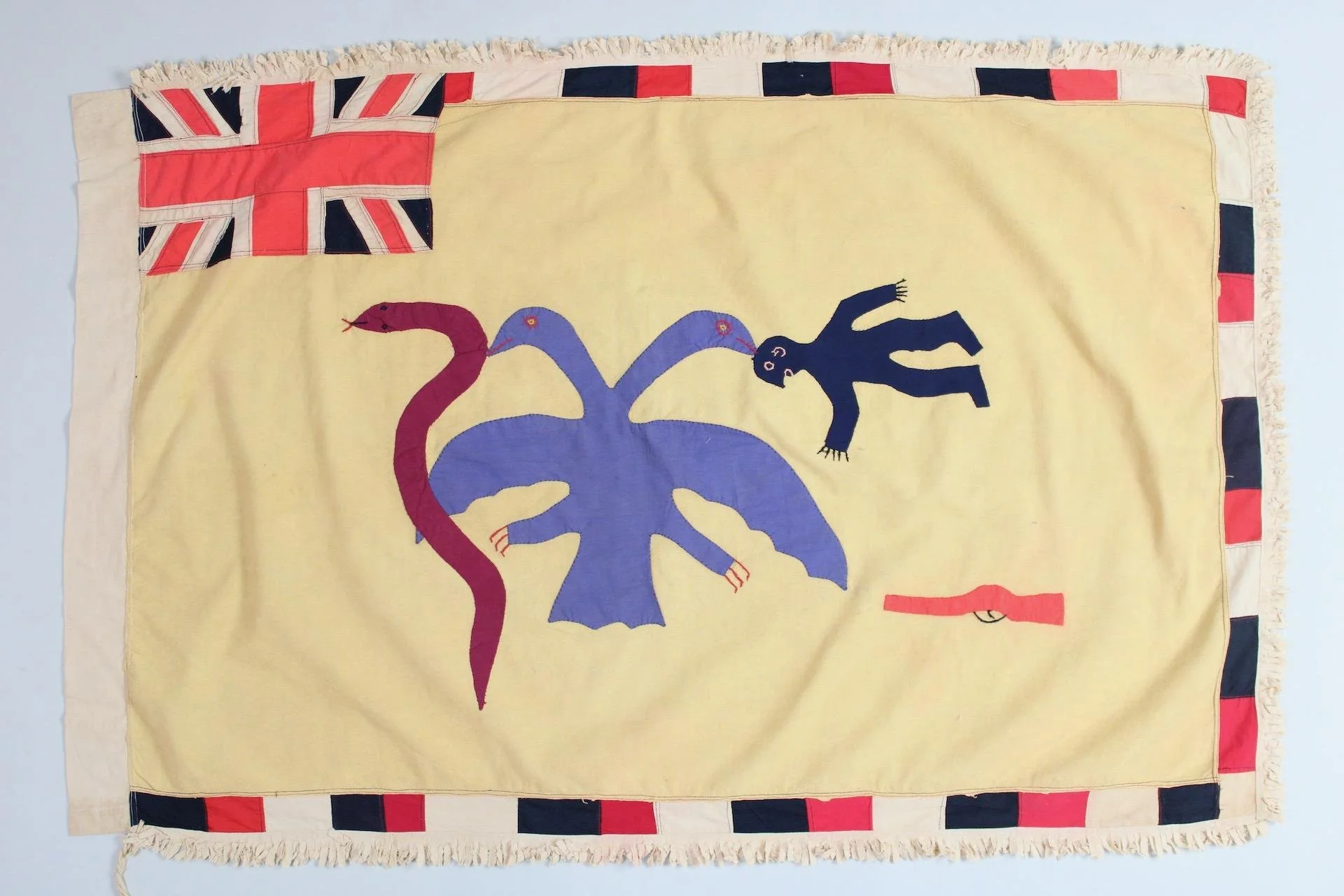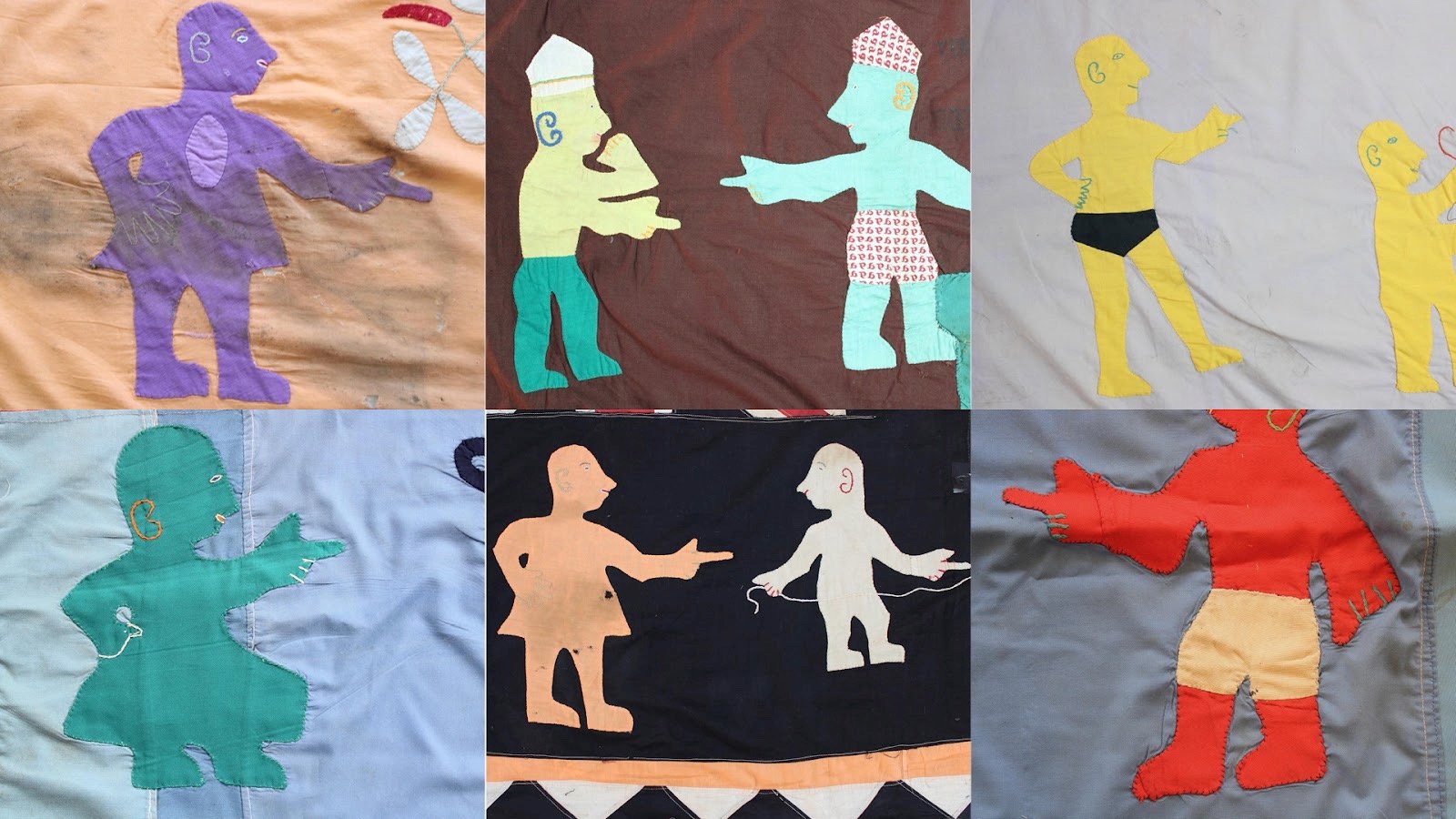The Pointed Designs of Fante Asafo Flags
Asafo flags, an artistic tradition of the Fante people of Ghana’s central coast, do a lot of pointing. Literally—they often depict a figure with an outstretched arm and one finger extended, in the direction of another figure, an object, or sometimes a whole scene. Indeed, it can feel as if the figure in the flag is pointing at the flag itself, in its entirety, in a gesture that is at once didactic and self-referential, practical and redundant, pointed and pointless.
A book’s index contains a list of subjects that “point” to their location in the book. The word derives from Latin index, meaning ‘forefinger, sign.’ We usually point with the finger that has come to be known as the “index” finger. The flags have a broader indexicality, serving to point us in many different directions.
They point to the rich heritage of Fante culture, illustrating traditional proverbs, such as Lot 127: “When the cat is dead, the mice are happy.” Or Lot 319: “A child who shows assertiveness will surely become chief. ” Or Lot 137: “If a child wants to pick a ripe pepper let him do it, when it gets in his eyes, he will stop himself.”
Lot 319: 'Asafo No.1 Chief' by maker Kobina Badowah of workshop Kormantse, Central Region, Ghana.
Asafo flags also point to their maker’s military company, to specific attributes or qualities that boast of their own status or to intimidate rivals. Lot 345: “Our palm wine pot is never empty.” Lot 335: “We control the clock-bird.” Or Lot 116: “We are the Lock & Key.”
They also point outwards toward those rivals, like Lot 126 whose meaning was glossed this way: “You say you are a man, but I weighed your burden and you are weak". Their use of European heraldry, specifically the common incorporation of the British flags positioned in the canton or upper corner, both indexes and incorporates the power of that symbol, like an act of defiance by design, as if to say: “Your flag is simply a part of our flag.”
Lot 345: 'Palm Wine' by maker Issac Badowah of workshop Kormantse, Central Region, Ghana.
Asafo flags more broadly are symbols of both power and resistance. Some were made and used in the context of rebellions against British rule, and later banned by local governments. Today, they are still actively used for various ceremonial purposes.
Yet Asafo flags always seem to point to something beyond their original intent. They are an example of creativity that transcends practicality, of art that is made for a specific purpose, or several purposes, but somehow always exceeds that specific purpose. Through the broader ongoing tradition of flag-making and the individual creativity of each artist who is a part of it, they always point to something greater.




























































































































We are grateful to Barbara Eyeson for identifying the specific artists behind these Asafo flags, as well as information on their meanings in reference to Akan proverbs. Eyeson’s family is from the Fante tribes living along Ghana’s southern coast. Based in London, she maintains her own collection of Asafo flags and is creative director of Asafo Company. Her connections to the culture and contacts with flagmakers have led her to produce documentaries on contemporary flagmakers like Baba Issaka who maintain flagmaking studios and pass their skills along to a new generation of artists. We encourage winning bidders to contact Barbara directly to try to determine the attribution, meaning and dating of flags, and help support this rich tradition and the living artists still practicing it today.



